12DOVE Verdict
CRKD doesn’t make massive, sweeping changes to its Switch controller formula with the Nitro Deck+, but it does make a few targeted improvements that bolster it to new heights. Symmetrical thumbsticks lead the way, and feature improvements cure small issues I had with the original version. For its accessible price tag, this is one of the best ways to enjoy the Nintendo Switch in 2024.
Pros
- +
Symmetrical sticks add comfort in almost every game
- +
Six extra buttons
- +
Improvements over the original Nitro Deck
- +
Reasonable price
- +
Can work as a Switch Dock
Cons
- -
Plastics let down the feel
- -
Original Nitro Deck is so affordable
Why you can trust 12DOVE
I’ve collected seven out of the eight red coins I need on Super Mario 64’s Cool, Cool Mountain, and I have the CRKD Nitro Deck+ in my hands. A few weeks ago, I was attempting the same task with the original Nitro Deck, but the deceptively slippy ice physics combined with that controller’s equally slippery thumbsticks merged into a perfect storm. I slid off the mountain, got distracted, and didn’t come back until now.
Things feel different this time around though. Additional rubberized dot textures on the Nitro Deck+’s thumbsticks make it far easier to nudge carefully in any direction, and I have confidence that one of the best Nintendo Switch controllers isn’t going to let me down this time.
I get a little bit cocky, and using the new side bumpers in combination with its four back buttons, I attempt a very risky jump maneuver I’ve never pulled off, and only seen in speed runs. Thanks to the symmetrical thumbsticks, I can shift the camera far easier than I’ve been able to before, and I nail the jump. I collect the final coin, a Power Star springs up, and I move on. I pivot the controller in one hand with an approving nod. For $69.99 / £69.99, I think, this isn’t bad at all.
Design

As my fellow hardware editor, Phil pointed out when the Nitro Deck+ was revealed back in February, the new Nitro Deck+ makes the Switch look even more like a Steam Deck than the original CRKD Nitro Deck. The idea behind these controllers is a simple one. Take the great functionality of today’s best gaming handhelds and bring them to an aging Nintendo Switch that arguably paved the way for their resurgence in the modern era. While there’s no internal power boosting going on here, it does give the console a big quality-of-life boost in handheld mode.
The biggest difference with the Nitro Deck+ is that it comes with symmetrical thumbsticks. This is great for accessibility, folks with larger hands who struggle to avoid thumb cramps with smaller devices, and anyone who’s been searching for this controller layout since the Switch launched in 2017.
There are also some clever sidebumpers (dubbed sidekick buttons) to enjoy here, which make the Deck+ feel even more like a competitive pro controller for the Switch and Switch OLED. Four back buttons carry over from the existing Nitro Deck, and for the most part, they add a lot of functionality you’d otherwise struggle to find among the best Nintendo Switch Accessories.

A refined release catch is such a welcome addition to the Nitro Deck+. I didn’t mention it when I reviewed Embracer Group’s first crack at a Ninty controller, but getting your console out of that cradle was a nightmare. No matter which way you did it, you ended up with a giant palm-shaped smudge in the middle of your screen from trying to pull it carefully away from the USB-C connection. Here, the release catch has an extra click to it, which ejects the console just enough so that you don’t need to make a mess of your display.
Despite the collection of colorways the Nitro Deck released with and has since added to, the Plus variant has been fairly withdrawn with its aesthetics out of the gate. There’s a black and a white version, and both sport a slight transparency that doesn’t let you peer into its innards but provides a layer of mystique to signify there’s more going on under the hood than there was before.
Features
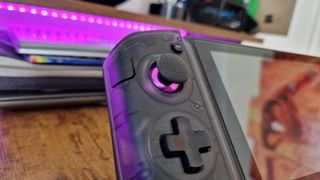
That clever visage might be because the Nitro Deck+ does have some interesting technical tricks up its sleeve. To begin with, it can now double as a fully-fledged Switch dock. Any HDMI to USB-C splitter will work with CRKD’s new device, so you can now enjoy the handheld controller while the display casts to your TV or monitor.
Admittedly, this could be done in part with the original Nitro Deck, since its USB-C connection made it available to use as one of the best PC controllers. On Switch, you could hook it up to a docked console, but the gamepad would then feel oversized and empty as a result. I’ll let you decide if it’d be more convenient for you to buy an extra-long HDMI cable for the Deck+, but it’s a versatile feature nonetheless.
The upgraded Nitro Deck sports the same input and output USB-C connections on its back and features the same kickstand you’ll be used to if you own the original model. Some well-placed vents on its bottom allow air to travel up the Switch’s spine and allow noise from the rear speakers to escape.
Hall Sensor sticks remain one of the Nitro Deck’s most alluring features, as anyone who’s had to replace their Joy-Cons due to stick drift will benefit from total immunity here.
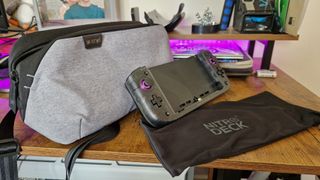
Gone is the hard travel case of the Nitro Deck. In the box this time around you get a silky smooth pouch which definitely won’t provide much protection but will prevent scratches when slid into a backpack. This pouch replaces the screen wipe the Nitro Deck generously provided in its box as well, which was probably only included with the original because of aforementioned palm smudges.
If you feel you need more protection, you can opt for a Pro Gear Bag which CRKD kindly sent with my review sample. It offers a bit more portability and padding, and although I’m not inclined to take a separate bag with me just for a games console when I go out, the added room and hidden pouches in this satchel make it a versatile accessory if you’re willing to spend more.
Before I get lost in the feature sauce, let me quickly list some of the other special tricks this thing has up its sleeve. Adjustable vibration is a big one if you thought, like me, that the Nitro Deck’s rumble was a bit distracting, No Deadzone Mode lessens the fairly large feeling deadzones out of the box, Turbo Function is there for players who enjoy holding down a button instead of tapping it, and a Bluetooth companion app can help to update firmware.
Performance

From reading those design and features sections, it’s clear there’s a lot that this controller offers compared to most other third-party Joy-Con replacements. Playing Switch games with the Nitro Deck+ makes an aging console feel brand new. While that was true of the original, I feel like I can play for hours on end now because I don’t have to shift my right hand to avoid uncomfortable thumb positions. In addition, let me add right out of the gate that I noticed no change to my Switch’s battery life when using the Deck+.
The Nitro Deck feels bulky, which is great if you have bigger hands. Arguably, the original felt a tad too chunky, making a bit of a mockery of the Switch’s petite form factor. The Nitro Deck+, which appears to have exactly the same dimensions as its older sibling, somehow doesn’t feel as bulky. It seems menial, but I think the symmetrical layout results in a device that doesn’t poke out at awkward positions for your hands, making it feel slimmer. Small changes like this can make a big difference to overall ergonomics, and I’d argue that the Deck+ is a big improvement.



There’s no doubt in my mind that symmetrical thumbsticks are more comfortable for a handheld gaming device, but they need support from back buttons to stay that way. Super Mario Odyssey, Super Mario 64, and Tears of the Kingdom are arguably easier to control as a result of the helpful sidekick and back buttons. In fact, in the latter, I felt I finally had enough utility to deal with its quite busy control scheme and over-reliance on directional buttons. Even in more chilled-out experiences where there aren’t that many in-game actions, the Nitro Deck+ feels comfortable to hold for longer sessions. Animal Crossing and The Cosmic Wheel Sisterhood can be fairly UI-intensive, and I found using the side bumpers for general menu actions to be a convenient change-up.
One thing I wish CRKD had improved about these back buttons though, is the materials used for them. They’re well-shaped and cleverly placed on the controller’s grips, but I wish they didn’t emit a hollow click due to their cheap plastic build quality. They have a small actuation, and take some pressing depending on the angle your fingers rest in. I’d have loved some easy-to-press microswitches like the ones found on the Turtle Beach Stealth Ultra or alternatively, more protrusion from the body of the controller. In fairness, this is a very affordable device, so I don’t feel it’s fair to complain too much about cheap-feeling plastics. Still, this is one letdown in an otherwise premium-feeling package.
Should you buy the CRKD Nitro Deck+?

In the end, I think your choice of either the Nitro Deck or the Nitro Deck+ might come down to your thumbstick layout preferences and the games you like to play. In Super Smash Bros Ultimate, I did feel like the original controller actually served me better, but then in almost every other game, I preferred the symmetrical layout. Arguably, that could point to there not being a big enough disparity between the Nitro Deck and its new Plus sibling, but then again, it’s never a bad thing to have more choices on the shelves.
For $69.99 / £69.99, this controller is still an absolute bargain. There’s longevity, functionality, practicality, precision, and a whole lot of fun to be had with this Switch controller. Even as we stare down the barrel of a “Switch 2”, this accessory is priced fairly enough that you’re not going to feel you’re pointlessly investing in a dead ecosystem. On the contrary, this could be the controller that gives your dust-gathering Switch a whole new lease of life and stops you from buying a handheld PC like the Steam Deck OLED or Asus ROG Ally.
How we tested the CRKD Nitro Deck
I put the CRKD Nitro Deck+ to the test with my Nintendo Switch for around five days before writing this review. In that time I played around with its various features and design flashes, playing with it across multiple genres of video games. I used its back buttons and sidekick buttons, assigning them to different functions, and spent some time testing the original CRKD Nitro Deck out again for points of comparison.
For a full rundown of how we test the latest controllers and accessories, check out the 12DOVE Hardware Policy.
Looking to get serious about your Mario Kart gameplay? There’s a Switch-compatible option in our best PC racing wheels guide. Alternatively, break into the racing sim lane with the best PS5 steering wheel, and the best Xbox Series X racing wheel.
One of my earliest memories is playing SuperMario64 and wondering why the controller I held had three grips, but I only had two hands. Ever since I've been in love with video games and their technology. After graduating from Edinburgh Napier University with a degree in Journalism, I contributed to the Scottish Games Network and completed an Editorial Internship at Expert Reviews. Over the last decade, I’ve been managing my own YouTube channel about my love of games too. These days, I'm one of the resident hardware nerds at 12DOVE, and I take the lead on our coverage of gaming PCs, VR, controllers, gaming chairs, and content creation gear. Now, I better stop myself here before I get talking about my favourite games like HUNT: Showdown, Dishonored, and Towerfall Ascension. Location: UK Remote








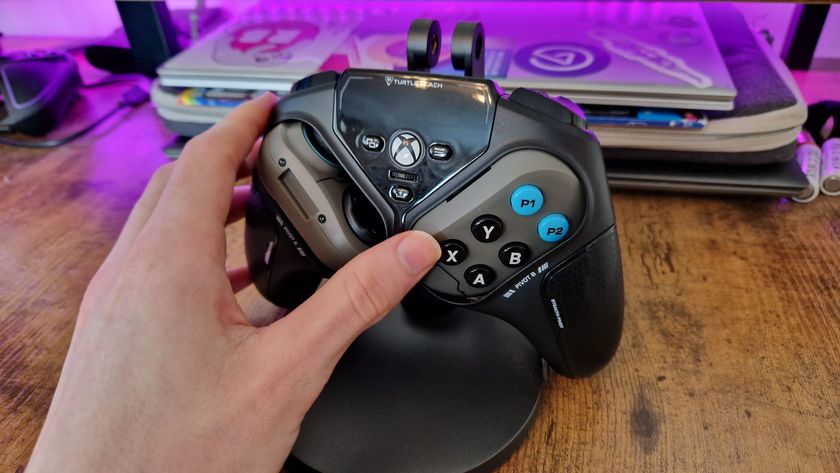

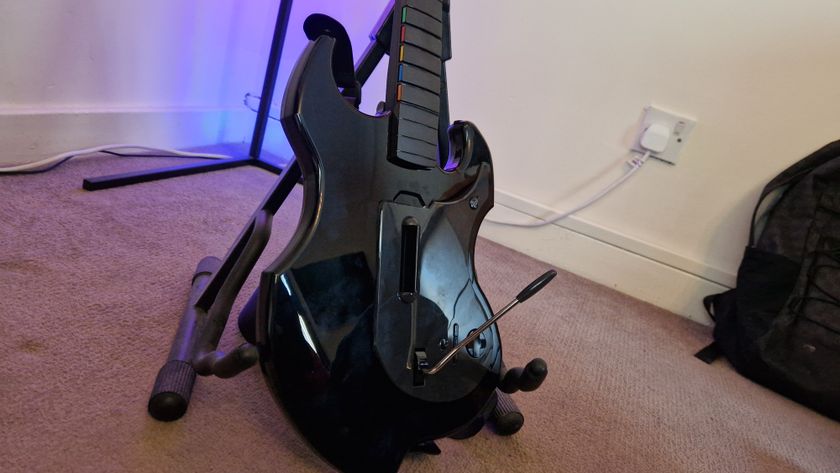








Andor showrunner hopes that the Disney Plus show's success helps convince Lucasfilm to sign off on either a Star Wars horror movie or sitcom
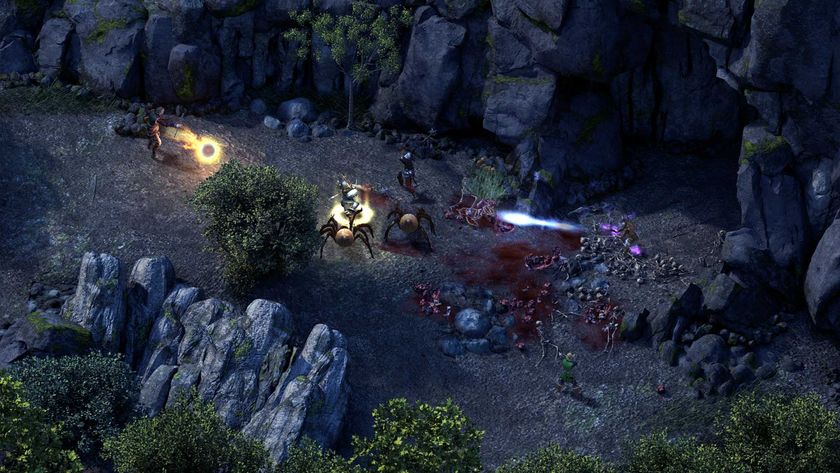
10 years later, in a post-Baldur's Gate 3 and Avowed world, Obsidian is giving its own throwback CRPG Pillars of Eternity a turn-based combat mode

The OG Fox X-Men are back, with Patrick Stewart, Ian McKellen, and more joining the cast of Avengers: Doomsday alongside a whole new Avengers team to take on Robert Downey Jr's Doctor Doom




